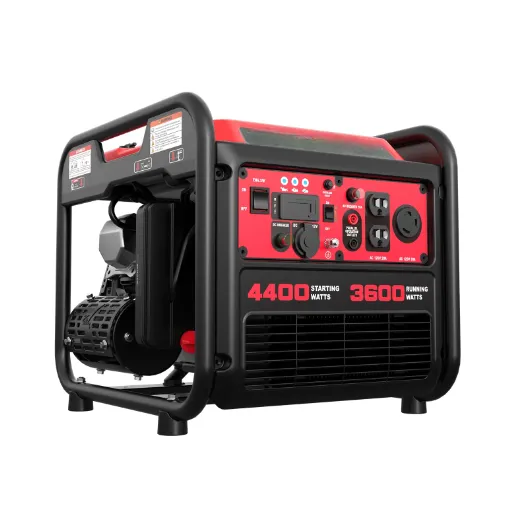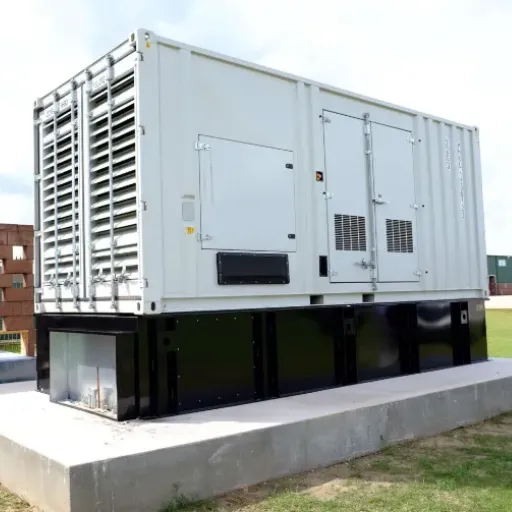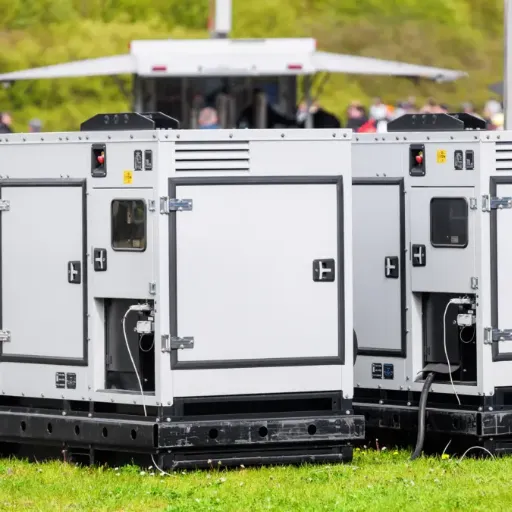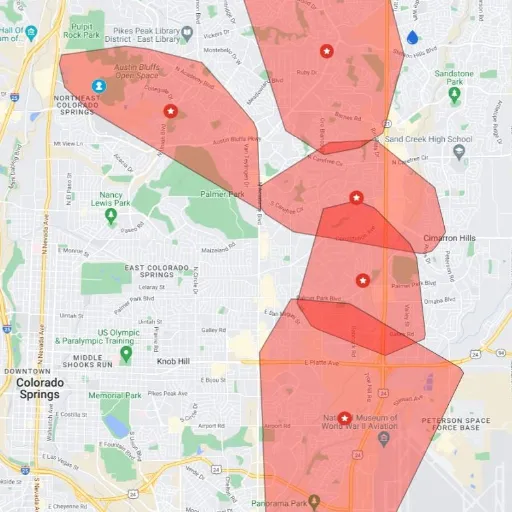A standby generator can be life-saving during an unplanned power failure. However, owning a generator is merely half the job. It is equally important to keep it 100% functional on the day it is needed the most. The article is, therefore, a kind way of demonstrating some of the times maintenance is necessary before the event, and how being ready brings peace to the mind when the unplanned eventuality occurs. Whether for your home or your business, the article will provide you with actionable tips and strategies to keep that generator in top-notch condition- it should never fail as a power backup solution when needed.
Why is Generator Testing Crucial?

Generators need to be tested regularly to ensure that they supply power reliably during outages. With regular tests, engineers can detect and fix developing problems before they become failures. Test verification instills confidence that fuel levels, battery life, and system components are working well and that there is less chance of a dire malfunction when the generator needs to be used. Proactive maintenance will also lengthen the lifetime of the equipment, protect it against costly repairs, and give you peace of mind during emergencies.
Understanding the Importance of Non-Emergency Generator Testing
All non-emergency generator testing scenarios ensure backup generators perform at the needed level during crucial times. According to recent industry concerns and opinions, regular checks reduce the potential of generator failure, which is vital when performed by industries, healthcare players, or residential systems during outages.
An analysis maintains that approximately 70% of backup generator failures during power outages were caused by inadequate testing and maintenance. Bad fuel, aging batteries, and neglected components are some issues that could remain unnoticed without periodic inspections. Other common killers of performance include dirty filters and improper nominal voltages; they remain silent if undetected during tests.
Currently, the recommendations suggest that load bank testing be conducted at least once a year so the generator can run at full rated capacity under genuine load conditions. It does this to help find any hidden defects and resist carbon deposits, a common problem encountered during frequent low-capacity running of generators. Testing is also required for compliance with NFPA 110 standards, a professional requirement for traveling that centers on power reliability, mainly in industries from the healthcare and data center sectors.
Companies can remain one step ahead of maintenance requirements by harnessing the most modern monitoring technologies, from real-time diagnostics to automated alerting. Facilities using IoT-enabled generator solutions report an improvement of 25% in system uptime and nearly a 30% reduction in emergency repair costs.
By understanding these perspectives and applying data-driven maintenance strategies, support maintenance bi-folds the reliability of generators, reducing maintenance costs and ensuring uninterrupted operations when an unforeseen power disruption hits.
How Testing Ensures Preparedness During a Power Outage
Being regular in testing generators is crucial if one wants to ensure they can operate smoothly during a power failure. Testing can identify potential issues before they become problems, and also evaluate the ultimate state of readiness of a system infrastructure for power backup. The following points depict five ways testing improves readiness:
- Early Detection of Equipment Failures
Periodic testing will spot hidden faults such as worn-out components, fuel leakages, or electrical problems, decreasing their failures when they are most needed during emergencies.
- System Load Verification
Load testing assures that the generator can bear the facilities’ power demand under real load conditions, preventing it from being loaded when its power is most needed.
- Fuel and Battery System Checks
Testing assures that the fuel is of good quality, the fuel flow is proper, and the batteries work fine, thus avoiding poor-quality fuel, insufficient starting power, etc.
- Compliance to Standards and Regulations
Ensuring regular testing prevents companies from fines or risks under the guidelines of the industry safety standards.
- Uplifted Suitability Metrics
The facilities that engage in testing almost always show a 15% improvement in system reliability, which is accompanied by shortened outage time due to the advanced resolution of issues.
By incorporating these measures into regular maintenance schedules, an organization will secure operational readiness, minimize risk, and sustain performance during critical power outages.
What Happens if You Don’t Test a Residential Standby Generator?
|
Key Point |
Details |
|---|---|
|
Unreliable Performance |
The generator may fail during an emergency. |
|
Undetected Maintenance Issues |
Problems like fuel leaks or battery failure remain unnoticed. |
|
Reduced Efficiency |
Inefficient operation wastes fuel and increases wear. |
|
Shortened Lifespan |
Lack of testing accelerates component degradation. |
|
Unexpected Costs |
Repairs during emergencies are more expensive. |
|
Safety Risks |
Potential hazards like carbon monoxide leaks go unnoticed. |
|
Missed Familiarization |
Users may not know how to operate the generator during outages. |
|
Transfer Switch Issues |
Problems with power transfer may not be identified. |
|
Clogged Filters |
Filters may clog, reducing performance and reliability. |
|
Missed Load Testing |
The generator may not handle full power demands during an outage. |
How to Properly Test a Standby Generator

Steps to properly test a standby generator are:
- Inspect the Generator
Before starting any test, visually check the generator for wear, damage, or possible leaks. Then, do the necessary cleaning, ensuring that the unit is generally free from dirt and dust.
- Check Fluid Levels
Check that the generator’s oil, coolant, and fuel levels are sufficient. Replenish fuel when necessary.
- Perform a Battery Check
Test the generator’s battery. It must be able to hold a full charge and should be replaced when it shows signs of degradation or just does not hold a charge.
- Run the Generator
Run the generator under no load. Observe smooth operation, watching for unusual noises, vibrations, or smoke.
- Load Test
Connect the generator to a load to simulate a real power outage and run it for a suitable length of time to establish that it is capable of supplying the required power.
- Monitor System
During the loading test, check key indicators such as voltage, frequency, temperature, and system performance to confirm they are all within the recommended parameters.
- Record Test Reports
Note down the test reports, highlighting any issues or irregularities encountered. These records can be used for maintenance or performance tracking.
Consistent use of these steps can ensure your standby generator remains ready and reliably functional during a real power outage.
Steps to Force the Standby Generator Into Action
|
Step |
Details |
|---|---|
|
Turn Off Main Breaker |
Disconnect power from the utility line. |
|
Check Fuel Levels |
Ensure sufficient fuel for generator operation. |
|
Inspect Oil and Coolant |
Verify oil and coolant levels are adequate. |
|
Start the Generator |
Follow the manufacturer’s starting procedure. |
|
Listen for the Transfer Switch |
Wait for the transfer switch to click. |
|
Test Power Delivery |
Check appliances to confirm power supply. |
|
Monitor Performance |
Observe for unusual noises or power fluctuations. |
|
Return Breaker to On |
Reconnect the utility power after testing. |
|
Record Test Results |
Log performance and any issues for future reference. |
Using a Transfer Switch to Click and the Generator Starts
A transfer switch is the most suitable for safely and efficiently operating a standby generator. It stands as the bridge between your generator and the electrical system,on which fast transitions are made during an outage. Manually or automatically, a transfer switch makes certain that the generator’s power is directed toward your home or facility whenever the utility supply ceases to function. The outline below describes the subsequent steps and factors to consider, supported by current insights:
Working of a Transfer Switch
When the primary power goes out, the transfer switch detects the failure and interrupts the connection to the utility power source. It then connects with the generator so the current flows only from the generator to the circuits it is supposed to protect. Some switches are automatic, such as ATS, requiring no intervention, while others are manual, requiring the intervention of flipping the switch.
Types of Transfer Switches
- Automatic Transfer Switch (ATS):
- It automatically detects outages and switches to the generator.
- Ideal for critical systems where uninterrupted power is required, for instance, medical or security devices.
- Compatible with newer generator models that have innovative monitoring capabilities.
- Manual transfer switch:
- In case of an outage, the switch has to be activated by a person.
- Less expensive than an ATS but requires someone’s presence for activation.
- Suitable for non-critical applications and smaller setups.
Steps for Using a Transfer Switch
- Preparation:
- Ensure the generator has enough fuel and working conditions.
- Test the generator from time to time for functionality.
- Engaging the Transfer Switch:
- For Manual Switches:
- Flip the main breaker “Off” to prevent any utility supply.
- Turn on the generator breaker and allow power flow to the selected circuits.
- Turn on the individual circuit breakers for generator-loaded circuits.
- For Automatic Switches:
- The ATS automatically executes all the steps virtually and immediately when it senses an outage.
- Monitor Operation:
- Ensure the connected appliances or systems work fine once the generator is running.
- Monitoring tools are used to measure load and generator performance.
- Back to Utility Power:
- When the utility is back, the generator will either automatically turn on or be manually reverted to the default power supply.
Key Statistics on Transfer Switch Reliability
- Automatic transfer switches can reduce downtime by as much as 95%. They were studied and found to be particularly effective in commercial applications.
- A first-class transfer switch with adequate maintenance can last over 20 years.
- Systems with ATS-equipped generators show 35% fewer use-related errors, especially in operating risks and hazards during emergencies.
Transfer Switches Maintenance: Best Practices
Check the switch for any visible damage or wear regularly.
- Perform routine tests every 6 months, whenever possible, to ensure it responds to requirements.
- Keep the switch clean and free of dust or debris that might interfere with its operation.
- With your transfer switch operating efficiently and integrated into your standby generator system, an unpredictable power outage will no longer threaten the protection of your home or business.
Maintaining Your Home Generator for Optimal Performance
One should service the home generator regularly by following the manufacturer’s instructions. One should also be able to check the oil levels, inspect the parts, and ensure proper ventilation for efficiency and longevity.
Common Issues Identified During Generator Testing

- Low Battery Voltage
A frequent problem is the battery discharging, which prevents the system from starting. Check and recharge the battery from time to time to prevent this.
- Fuel System Blockages
Blocked fuel lines or filters can interfere with the generator’s operation. Clean these things daily to ensure the gasoline supply is not interrupted.
- Oil or Coolant Levels
A low oil or coolant level may cause overheating or even mechanical damage. Always check these levels before running.
- Corroded Connections
Any loose or corroded connection may hamper power delivery. Inspect the connections periodically to identify corrosion or loosening.
- Worn or Damaged Components
Parts like belts or hoses can wear out with time. Go ahead and replace whatever they need so they can be most efficient and reliable.
Handling these problems in tests improves the generation performance and reliability.
Addressing Repair Needs Promptly
With this in mind, prompt generator maintenance is essential to function efficiently and not have current expenses resting on inefficiency, on which entire search trends are thrown in favor of proper maintenance.
Identifying Electrical or Mechanical Failures
In determining if a generator has developed electrical or mechanical faults, I usually look for common warning signs like unusual noises, irregular power output, or visible wear on components. I check the wiring connections, test the voltage output using a multimeter, and inspect mechanical parts such as bearings or belts for damage. Speedy intervention in such instances guarantees the reliable operation of the generator and averts exacerbating complications.
Recognizing Backup Power Failures
In the event of backup power failure recognition, I would observe closely to see whether any signs appear, namely the generator not starting, power supply being irregular or insufficient, or error messages flashing on the system display. I first verify that all fuel tanks have fuel and the batteries have proper connections; then I test whether the automatic transfer switch is functioning. Such a systematic approach helps me to identify the causes of problems and treat them, which guarantees that the backup power system works when called upon.
What to Do When a Power Outage Occurs?

- Stay Calm and Assess the Situation
Determine whether just your property is affected or the incident extends beyond. Also, check for announcements or updates from your utility company.
- Disconnect Electronics
Unplug electronic devices and appliances to prevent damage if a power surge occurs when electricity is restored.
- Use Alternative Lighting
A flashlight or a battery-powered lantern would be much safer than candles.
- Preserve Food and Water
Do not open the refrigerator or freezer unless necessary. This helps in keeping the food stored cold for as long as possible.
- Check Your Backup Power System
Ensure your backup generation system works correctly, such as the generator running safely and according to instructions.
- Stay Connected
Keep a charged phone, radio, or any other device to get updates regarding power restoration and emergency services.
- Avoid Dangerous Activities
Never use these grills, camp stoves, or generators indoors, for it can lead to carbon monoxide poisoning.
- Prepare for Extended Outages
If the power failure lasts for a long time, consider moving to a safe location with a power supply, especially if the weather is inclement.
Staying safe with these steps will help prepare you for contingencies posed by a power outage.
Ensuring Your Generator Returns to Standby Post-Outage
|
Step |
Details |
|---|---|
|
Wait for stable utility power restoration. |
|
Ensure the transfer switch detects utility power. |
|
Let the generator run briefly before shutdown. |
|
Shut down the generator after transfer to the utility. |
|
Set the generator to automatic standby mode. |
|
Check for any issues or unusual behavior. |
|
Record any observations for future reference. |
Managing Appliance Load During a Power Failure
When managing the appliance load during a power failure, I restrict the use of refrigerators, medical equipment, and lighting for safety and convenience reasons. I also ensure that the power source does not get overloaded by running only a few appliances at a time and unplugging non-essential appliances. I also stagger the use of high-energy equipment to avoid any trips or potential damage to the system, thus ensuring smooth functioning of my household until the power is restored fully.
Choosing the Right Home Generator for Your Needs

Before buying a home generator, assess your power needs. Decide which appliances and technologies you need to run during an outage, including at least a refrigerator, some lights, medical lab equipment, or heating and cooling systems. Calculate their wattage altogether to size the generator properly. Generators usually get classified as portable or standby. Portable generators are cheaper and more versatile, while standby generators are high-powered solutions for permanent installations and offer automatic operation. Give reliability considerations depending on the fuel: gas, propane, or solar; low noise; and safety features such as low-oil shutoff. Now, consult a professional for proper sizing and installation, or read the instructions provided by the manufacturer.
Deciding Between a Portable Generator and a Standby Generator
|
Feature |
Portable Generator |
Standby Generator |
|---|---|---|
|
Power Output |
1-10 kW, limited to small appliances. |
10-150 kW, powers entire home. |
|
Cost |
$400-$1,500, lower upfront cost. |
$2,000-$5,000 plus installation. |
|
Fuel Type |
Gasoline, propane, or diesel. |
Natural gas or propane. |
|
Operation |
Manual start, requires refueling. |
Automatic start, no manual intervention. |
|
Installation |
No installation needed, portable. |
Permanently installed by professionals. |
|
Maintenance |
Requires regular refueling and upkeep. |
Minimal maintenance, self-monitoring. |
|
Use Case |
Short outages, mobile use (camping, tailgating). |
Long outages, whole-home backup. |
|
Noise Level |
Noisy, requires weather protection. |
Quieter, weather-protected casing. |
|
Safety |
Risk of CO buildup, needs outdoor operation. |
Safer, integrated with home systems. |
|
Convenience |
Manual setup, limited outlets. |
Seamless operation, powers all systems. |
Considerations for Generator Installation and Fuel for the Generator
|
Aspect |
Key Considerations |
|---|---|
|
Generator Type |
Choose between portable or standby generators. |
|
Power Output |
Match generator capacity to home power needs. |
|
Fuel Type |
Options: natural gas, propane, diesel, gasoline. |
|
Fuel Availability |
Ensure fuel is accessible during emergencies. |
|
Fuel Storage |
Follow safety guidelines for fuel storage. |
|
Site Assessment |
Select location based on codes and safety. |
|
Installation Permits |
Obtain necessary permits and follow local regulations. |
|
Noise Levels |
Consider sound ordinances and noise attenuation. |
|
Safety Measures |
Install outdoors, away from windows and combustibles. |
|
Cost |
Include generator, installation, and maintenance costs. |
|
Maintenance |
Plan for regular servicing and fuel system checks. |
|
Environmental Impact |
Opt for cleaner fuels like natural gas or propane. |
|
Future Expansion |
Size generator for potential future power needs. |
|
Transfer Switch |
Install for seamless power transition during outages. |
Evaluating Generator Brands and Models like Generac
|
Brand |
Key Features |
Best For |
|---|---|---|
|
Generac |
Automatic start, eco-friendly, wide range of models. |
Whole-home backup, reliable performance. |
|
Kohler |
Durable, quiet, corrosion-resistant enclosures. |
Long-lasting, harsh weather conditions. |
|
Champion |
Budget-friendly, dual-fuel, user-friendly start. |
Cost-effective, portable and standby options. |
|
Briggs & Stratton |
Automatic transfer, compact, fuel-efficient. |
Reliable power for small to medium homes. |
|
Honda |
Quiet, fuel-efficient, inverter technology. |
Sensitive electronics, portable use. |
|
Westinghouse |
Affordable, long runtime, remote start. |
Dependable, dual-fuel, easy operation. |
|
DuroMax |
High output, dual-fuel, inverter models. |
Medium to large homes, versatile fuel options. |
|
Predator |
High capacity, tri-fuel, remote start. |
Large homes, high power needs. |
|
Bluetti (Solar) |
Expandable, quiet, eco-friendly. |
Solar-powered, indoor use, tech-savvy users. |
References
-
Generator Checkup: Meaningful Maintenance for Safe Service – Penn State Extension provides insights on ensuring backup generators are in top condition.
-
Generator Maintenance Program – UCR Facilities Services – University of California, Riverside discusses their generator maintenance and testing protocols.
-
Emergency Generators – The City of Escondido emphasizes preventive maintenance to avoid generator breakdowns.
Frequently Asked Questions (FAQ)
Q: Why is generator testing crucial before an outage?
A: Generator testing is crucial to ensure your generator will operate effectively during an unexpected power loss. Regular testing helps identify any breaker, wiring, or mainline issues that could prevent the generator from powering your home safely and efficiently.
Q: How often should I test my generator?
A: Testing your generator at least once a year is recommended. This routine check helps to verify that the generator is in good working order and can handle a power outage without issues.
Q: What type of fuel is best for testing my generator?
A: Generators can run on various fuel types, including gasoline, natural gas, and propane. Choose the fuel that your generator is designed for. Propane or natural gas is often preferred for their cleaner burn and longer shelf life.
Q: Is it safe to use a generator during a hurricane?
A: It is safe to use a generator during a hurricane, provided it is used correctly. Ensure it is placed in a well-ventilated area to prevent exhaust buildup and protect it from flooding. Ensure all safety guidelines are followed for safe operation.
Q: Can I perform a manual test on my generator?
A: Yes, you can perform a manual test on your generator. This involves starting the generator and checking its ability to power essential appliances like the refrigerator and lighting. It is important to follow the manufacturer’s instructions and consult a qualified electrician.
Q: What should I inspect during a generator test?
A: During a generator test, inspect the oil level, fuel supply, battery charge, and connections to the electrical panel for signs of wear or damage and ensure that the circuit breaker is functioning properly.
Q: How do I connect my generator to my home without power?
A: To safely connect a generator to your home, use a transfer switch and an extension cord rated for the load. This setup prevents backfeeding, which can harm utility workers and your wiring. A qualified electrician should install it for safe operation.
Q: Can a generator power my whole house during an outage?
A: A generator can power your whole house if sized appropriately for your home’s energy needs. Larger generators connected to an automatic power transfer switch can provide seamless power restoration, while smaller models may only power essential circuits.
Q: What should you do if the generator fails even after testing during an outage?
A: If your generator fails during an outage despite testing, first check the fuel level and circuit breaker. If these are in order, consult a qualified electrician to inspect the generator and identify any issues that need repair.







